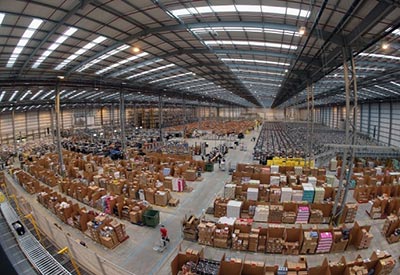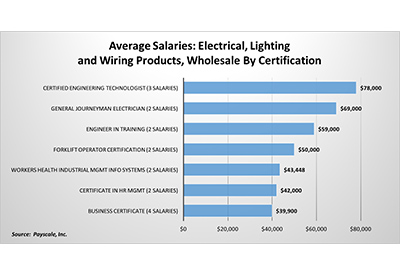Amazon Upgrades from Supply to Business

Amazon is considered one of the most innovative companies in the world, which, considering that they are a US$90 billion company, is pretty amazing. In fact, a Google search of “Amazon innovative company” yields 4.4 million entries. They regularly make publications’ top 10 lists. Jeff Bezos is given all of the credit but, realistically, in a company this large there need to be many different people generating ideas but their idea to essentially evolve to an intermediary model and provide marketplaces for buyers and sellers enables them to generate revenues with nominal risk and essentially is an evolution of their business model of using “other people’s money” (OPM).
This innovation of using OPM and not seeking to optimize profitability also enables Amazon to have almost an ADD-type mentality, considering the array of businesses, services and features that Amazon launches and the frequency of these introductions.There is always something new coming from the Seattle company. And in some cases they launch something that does not appear fully conceived (or tested) and then iterate the concept into a better concept and “relaunch.”Using customers for refinement inevitably leads to a better product.
This is what has happened with Amazon Supply.
Three years ago Amazon Supply was considered by many to be a warning shot to distribution. The “product” reportedly gained some traction in selected market segments and possibly with particular customers, but there were many flaws that inhibited Amazon from maximizing its potential. It appears that it was also a learning experience for Amazon as they shut it down May 13 and interestingly are redirecting customers to the consumer version of Amazon rather than to its successor, Amazon Business.What does this say about the traffic it was generating?
And this isn’t the first time that Amazon has shuttered a business with little notice to customers.They did the same thing a number of years ago in the incentive industry, launching an offering for incentive companies to use Amazon as their merchandise fulfillment solution and then closed it a couple of years later, giving the incentive companies only a few months to find alternatives.
Amazon Business is a much better version of Amazon Supply (although it is a clunky name and Amazon Supply may have been a better brand name from a marketing viewpoint, especially given the amount of PR it has generated. Can you envision customers saying, “I bought XYZ from Amazon Business?”)
ElectricalTrends received the following press releases from Amazon Business:
Introducing Amazon Business: Everything You Love About Amazon, For Your Business
A new marketplace on Amazon.com with features
that bring Amazon’s selection, convenience and value to businesses
Register for a free Amazon Business account to access business-only selection, pricing, free two-day shipping and more
Amazon today announced the launch of Amazon Business , a new marketplace on Amazon.com that combines the selection, convenience and value customers have come to know and love from Amazon, with new features and unique benefits tailored to businesses. Amazon Business provides easy access to hundreds of millions of products — everything from IT and lab equipment to education and food service supplies — as well as business-only selection and pricing. Amazon Business customers will also benefit from free two-day shipping on tens of millions of eligible items, multi-user business accounts, approval workflow, payment solutions, tax exemptions, dedicated customer support, and much more.
“We’ve heard from business customers that they love the convenience of shopping online, and want an experience at work that is similar to how they shop at home,” said Prentis Wilson, Vice President of Amazon Business. “Amazon Business delivers a new and expanded marketplace that brings the selection, convenience and value of Amazon to business customers, manufacturers and sellers with the additional selection, features and back-end integration businesses need to save time and money.”
Some of the features Amazon Business offers include:
• Tailored Business Experience: Unique search, browse and shopping experience that is tailored specifically to business purchasing.
• Business Accounts: Create a single or multi-user business account, invite additional users to join the account, and define groups of users to easily share payment methods and shipping addresses.
• Free Two-Day Shipping: Fast, free shipping on orders of $49 or more on tens of millions of eligible items, plus access to even faster shipping options.
• Multi-Seller Marketplace: View multiple offers on a single product page for easy price comparisons, as well as shop sellers that consistently meet the performance and service requirements that businesses expect.
• Business-Only Pricing: Business-only prices on select items and quantity discounts from select manufacturers and sellers.
• Business-Only Selection: Business-only items combined with Amazon’s vast selection provides access to hundreds of millions of products, including hard-to-find items like traffic signs, industrial deep fryers, antibodies, 55-gallon steel drums, dent pullers and much more.
• Purchasing Approval: Create approval workflows to enable better spending controls.
• Purchasing System Integration: Integrate leading third-party procurement solutions for easy access to Amazon Business.
• Amazon Tax Exemption Program: Make tax-exempt purchases and manage tax exemption permissions across an organization.
• Order Tracking: Add purchase order or reference numbers to purchases to assist with reporting and account reconciliation.
• Amazon Corporate Credit Line: Place orders and finance purchases using a Pay-in-Full Credit Line or a Revolving Credit Line.
• Comprehensive Product Information: Rich product pages and studio-quality photography, as well as dimensions, CAD drawings and manufacturer how-to videos.
• Amazon Business Customer Support: World-class Amazon customer service dedicated to registered business shoppers.
“We’re consistently listening to feedback from customers so we can innovate, deliver more value and set a new standard for B2B e-commerce with Amazon Business. We think this is an experience that businesses will love and a great opportunity for manufacturers and sellers to reach registered business customers. It’s only the beginning for this new marketplace – we will continue to build out features in areas like product support, payments, shipping and pricing,” said Prentis Wilson.
The promotion below is targeted at “sellers” (meaning to distributors and manufacturers… they need you!)
Amazon Business Ignites More B2B Customers for Sellers
Amazon Business offers sellers a suite of features to operate and expand their sales including business pricing, quantity discounts and Fulfillment by Amazon
Sellers on Amazon can boost their sales by reaching and servicing millions of business customers
Amazon today introduced Amazon Business (www.amazon.com/business), a new marketplace on Amazon.com. Sellers have the opportunity to grow their sales by reaching millions of business customers located across the U.S. Selling to businesses has now become as easy as listing your products on Amazon. Amazon Business features exclusive business pricing tools, the ability for sellers to list their credentials and quantity discounts for qualifying purchases. Through Amazon Business, sellers can benefit from Amazon’s ecommerce expertise, visibility for their full product catalog [sic] on an established online marketplace and greater access to business customers to grow sales. Amazon Business is available to sellers based domestically and internationally, and compatible with the Fulfillment by Amazon (FBA) service to meet rigorous delivery requirements expected by business customers.
Amazon Business features available to sellers now include:
• Amazon Business Seller Program: Sellers that meet the performance and service requirements will be prominently featured to business customers.
• Business Pricing and Quantity Discounts: One of the most requested features by business sellers is quantity pricing. Sellers can offer discounts when businesses purchase larger quantities. Sellers can also differentiate pricing to business customers.
• Seller Credentials: Sellers can add credentials such as ISO 9001 certified, small business, women-, minority- and veteran-owned businesses to their seller profiles, which will be displayed to business customers.
• Business Product Identifiers: Products that will be easily discoverable by customers using manufacturer and distributor part numbers (MPN/DPN) or National Stock Numbers (NSN) for purchases for government procurement.
• Fulfillment by Amazon: With FBA, sellers store their products in Amazon fulfillment centers. When customer orders are received, Amazon will pick, pack, ship and provide customer service for these products.
• Tax Exemption: Sellers participating in Amazon’s Tax Collection Services may also elect to participate in the Amazon Tax-Exemption Program (ATEP). ATEP allows customers to make tax-exempt purchases from participating sellers by providing a tax-exemption certificate and automates the process for participating sellers to accept tax-exemption certificates from customers.
On Amazon Business, sellers can list their offers in more than 45 business specific categories including office, IT, MRO, tools, scientific and food & beverage. New sellers interested in the Amazon Business Seller program can learn more at www.amazon.com/business-seller. Sellers currently selling on Amazon that support business level performance can sign up via their existing Amazon Seller Central account at sellercentral.amazon.com/hz/b2bregistration.
So,
• they have a marketplace (that reportedly already has 1000’s of distributors and manufacturers selling on it)
• are inviting you to participate
• will give you data
• provide you the privilege of paying them 12% down to 6% commission based on monthly volume levels (levels are <$1000/month, $1000-3000 and $3000+
And they have improved the product so that it is more business-friendly (and especially MRO-oriented) with
• multiple purchaser capability and “approval” processes
• punchout capabilities
• better shipping terms (free delivery in 2 days for orders $49+)
• state tax exemptions (makes it better for contractors / installers)
• reportedly “business pricing” (meaning lower than consumer pricing which may infer they are receiving price guidance in these industries or, because the sellers can set the price, assuming that the sellers will compete to offer low pricing
• and more
For the privilege of paying 6-12%, you can post information on Amazon Business, hope Amazon drives traffic, so Amazon can aggregate the information and then seek improved pricing from manufacturers by saying “this is what has sold through your distribution channels, trust us that these customers will continue to come back to us so we can sell the same amount, or maybe more, if you lower your prices and pay us directly.
A couple of things:
• According to this article, Grainger is squarely in Amazon’s sight.With the new purchasing approval processes and punch-out capabilities, this makes sense only if Amazon continues to deploy a sales force to call on large industrials / MRO purchasing organizations to solicit significant chunks of business. The smaller business may be purchasing from Amazon, maybe through the B2C component, for convenience.
• A posting on the Zacks Analysts Blog references that the B2B market is a $7.2 trillion market … so if Amazon only gets a small percentage it could be significant, but the article references other companies that are in this space … and realistically, will everyone want to do business with Amazon? Are there reasons to do business with you? Do you do a good job of communicating this?
• This post by TED Magazine suggests that the issue is a need for “innovation.”Independent distributors innovate regularly. What they don’t do frequently is identify their customer specific innovations and then determine if there is more of a market for that “service” and then develop it into an offering.They rarely train their sales organization on the offering, target customers and promote the offering. Amazon’s innovation is using OPM and a tool (the web) to aggregate others (and then use the power of PR to drive traffic).
Distribution has sourced product (sellers), has offered punchouts, offers delivery, provides credit, and much else of what Amazon Business is doing. Amazon, having an Internet mentality, has done a much better job of leveraging the technology with the expectation of driving buying behaviour… and then leveraging the fact that they will have data to drive lower pricing (sounds like negotiating? perhaps a different version of SPAs?).
Some takeaways:
• Having a user-friendly web option for customers will be required for distributors. Otherwise, you will have a lifestyle business focused around selected customers. (And yes, the industry has data challenges and e-commerce platforms are too expensive for the most part.)
• Distributors need to review their services, identify the “one-offs,” and consider how they can be promoted as services.
• If Amazon can analyze purchasing data and utilize it with manufacturers, should distributors (and do you think Amazon is calling on the local manufacturer rep)? Manufacturersmaybecomechallengedwiththis.
• Amazon will continue to iterate its business models and seek to reach broad audiences. Will you continuously review your business to seek new ways, identify opportunities to reduce costs and improve operational efficiency, and launch new services?The keyisserving the Customer.
Do you see Amazon Business as an upgrade? A bigger “threat” or “just another competitor?
David Gordon is President at Channel Marketing Group, supporting manufacturers, distributors and others in the electrical channel with accelerating growth through business / channel strategy, marketing development and customer-focused market research. We generate “ideas that deliver results.”
More in CEW by David Gordon:
Innovation Takes Culture, Not Only Books: Part 1
Innovation Takes Culture, Not Only Books: Part 2
Selling Lighting or Selling Data?
Is it Time to Hit the Reset Button?
Boosting Performance at Your Webstore
Evolving the Role of Marketing Within Your Distributorship
Strategies in Light Observations: Distributor LED Opportunities
Are You Ready To Sell LEDs Differently?
16 Distribution Industry Trends for 2016
Lighting the Way to Demand Creation
Converting Emails Into Sales Through Thoughtful Communications
Learning from Amazon and Generating Ideas
Turning Your Staff into a Competitive Advantage
Sales and Marketing – How Can Joint Sales Calls Become More Effective
Creating Demand to Drive Profitable Growth
Is Your Company a Kool-Aid Drinker?
What Manufacturers (and Their Reps) Don’t Know About Distributor Joint Sales Calls











